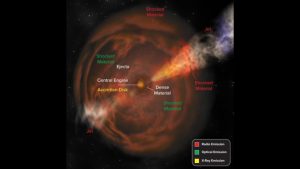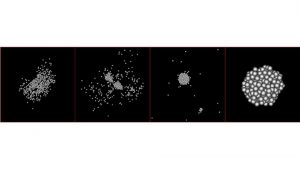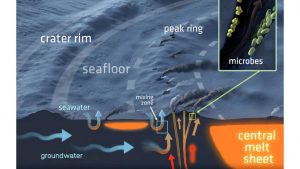Media
Transcript
Good morning and welcome once again for Monday. This particular weekend was one that showed the greatest extremes of what this experiment called the United States of America is capable of. On one hand, we saw the tremendous return to space of NASA astronauts onboard a rocket manufactured in the US and launched from Florida. This was a mission that showed what our mixing pot of a nation is capable of when we allowed our best minds to realize their greatest potential. At the same time, all across these United States, we have seen combinations of peaceful protests, police violence, and periodic riots. CosmoQuest has a policy against discussing politics. We are a place we want you to feel safe focusing on science while you escape from this world into the stars. All are welcome here, and in a statement written in 2016 on who we are, I wrote, and I want to reiterate here,
“This is a place where people are accepted without regard to their color, culture, religion or lack of religion, their education level, their wealth, or their caste. We do not care who you love, but only that you find love in this world. We believe that everyone can do great things, and we want you to be part of us doing great things.
“If you have the capacity to act, please help those who need it.
“If you just need a safe place for your mind to find sanctuary in science, please come here and be welcome.”
This week is the American Astronomical Society (AAS) meeting which is, like so many conferences, being held in virtual spaces this year. As we often do we’ll be providing simulcasts of press events on our Twitch channel, twitch.tv/CosmoQuestX
Our first story of the day doesn’t actually come from AAS but instead came out last week while we were on hiatus, and it came out with the title “The ‘Cow’ Mystery Strikes Back” and the most confusing scientist quote we’ve ever seen: “When I reduced the data, I thought I made a mistake. The ‘Koala’ resembled the ‘Cow’ but the radio emission was as bright as a gamma-ray burst!” This quote came from Anna Ho, a graduate student of astronomy at Caltech and lead author of the study. She was referring to SN 2018cow, which has an algorithmically determined name that just happens to spell ‘cow’. That particular supernova became famous for being 10-100 times more luminous than would be expected. In a paper in Nature, two competing teams came together to determine this was “either a newly formed black hole in the process of accreting matter or the frenetic rotation of a neutron star.” One of the key features of this system is an unusual blue color.

CREDIT: Bill Saxton, NRAO/AUI/NSF
The Koala in the quote was a second object, with the license plate designation ZTF18abvkwla. Those last 4 letters, ‘kwla’, earned this object the moniker ‘Koala’. This object wasn’t called a supernova but was instead referred to as a Fast Blue Optical Transient.
Now a third object, which has no cute name, has been found: CSS161010. This object was discovered through its radio and x-ray emissions, and like the prior two events, has a fast blue optical light pattern. It was also observed to be ejecting material at a substantial fraction of the speed of light.
In astronomy, finding three objects that act the same means there is a pattern and cause to declare the discovery of a new kind of object. This new kind of object is being called a Fast Blue Optical Transient, or FBOT, and is classified as objects that look like supernovae but have a bright blue transient superimposed and may be seen to be ejecting material rapidly. This work is described in a pair of papers in the Astrophysical Journal Letters and The Astrophysical Journal, with lead authors Deanne Coppejans and Anna Ho. These papers describe the likely origins of this blue outburst being the shock wave from the supernova hitting surrounding material.
This paper was likely written without knowledge of the paper we discussed two weeks ago describing Gamma Ray Bursts (GRBs) as being the result of a binary system. This paper reflects on the prominent model of GRBs being form single star explosions with powerful jets of not understood origins. This model advocates for FBOTs being single object explosions with a surrounding disk of material that generates a jet and the blue transient light.
I honestly wouldn’t be surprised if we discovered these FBOTs are either GRBs seen at a different angle or binary systems with a different configuration than GRBs. But… we don’t actually know right now. These are early days, and I kind of feel like we’re at a point where everyone needs to take a breath and reconsider these ultra-luminous objects.
For what feels like a couple of decades, folks have been saying we live in a golden age of astronomy. I think, as today’s stories will make clear, we’re ready to upgrade to platinum as this discovery and so many others are made possible through a new era of astronomical instruments.

CREDIT: ESO/M. Kornmesser
ESPRESSO, a new spectroscope on the Very Large Telescope (VLT), has, for instance, determined that the nearest star to Earth, Proxima Centauri, has a 1.17 Earth-mass planet in its habitable zone. Suddenly, out of the blue, we have a spectroscopic confirmation that our world is not alone.*
*life confirmation not included
Proxima Centauri is very different from our Sun. It is an active red dwarf, and this planet orbits the star every 11.2 Earth days and is likely tidally locked so that it always shows the same side of the planet to its star, just like how our moon always shows the same side to our planet Earth.
This system also appears to have potentially a second planet, which may only be one third the mass of the Earth!
Once we have tens-of-meter telescopes in the not-so-distant future, we’ll be able to explore if this world has an atmosphere, and it becomes easier to imagine someday making this world, at just 4.2 light-years distance, our first target of interstellar travel. This work is published in Astronomy & Astrophysics by lead author A. Suárez Mascareño.

CREDIT: Michel et al./Nature Communications
From advances on the ground, we are also seeing advances from space. Observations from the Hayabusa 2 and OSIRIS-REx missions are allowing us to see for the first time just how messy rubble pile asteroids can be and exactly how tiny the rubble in that rubble pile actually is. This is leading to improved computer models that can recreate the real worlds of Ryugu and Bennu and let us imagine how they were formed through dramatic, minor-planet shattering, events.
The cool under solar pressure Parker Solar Probe has also just completed passage through Comet ATLAS’s ion tail and is preparing to fly through the dust tail on June 6. This is one of the first times, if not THE first time, we have repurposed a spacecraft to chase down a comet in real-time while allowing it to continue on its primary mission. We can’t wait to bring you its results in future months.

And finally, advances in computing allow us to reimagine how the dinosaurs died. In a paper published in Science Advances with lead author D.A. King, researchers describe how the Chicxulub impact would have dug into groundwater reservoirs, creating a massive amount of steam that escaped through what are now seen as cenotes in the Yucatan peninsula. The list of things that worked together to kill the dinosaurs is ever-growing. From the initial impact inevitably squishing some, to the shockwave tossing many (some at escape velocity) to now steam, well… steaming more… to the atmosphere becoming an oven with re-entering debris giving off its heat to the atmosphere, to the prolonged darkness that came next from dust filling the atmosphere. How did the dinosaurs die? Oh, let me count the ways!
Let’s face it, the science goes on and on, but… this is all we have for now today.
Learn More
Astronomers Discover New Class of Cosmic Explosions
- National Radio Astronomy Observatory press release
- Northwestern University article
- Keck Observatory press release
- “A Mildly Relativistic Outflow from the Energetic, Fast-Rising Blue Optical Transient CSS161010 in a Dwarf Galaxy,” Deanne Coppejans et al. 2020 May 26, Astrophysical Journal Letters (Preprint on arxiv.org)
- “The Koala: A Fast Blue Optical Transient with Luminous Radio Emission from a Starburst Dwarf Galaxy at z = 0.27,” Anna Ho et al. 2020 May 26, Astrophysical Journal (Preprint on arxiv.org)
ESPRESSO confirms the presence of an Earth around the nearest star
- University of Geneva press release
- “Revisiting Proxima with ESPRESSO,” A. Suárez Mascareño et al., 2020, to appear in Astronomy & Astrophysics (Preprint on arxiv.org)
The asteroids Ryugu and Bennu were formed by the destruction of a large asteroid
- CNRS press release
- “Collisional Formation of Top-Shaped Asteroids and Implications for the Origins of Ryugu and Bennu,” Patrick Michel et al., 2020 May, 27, Nature Communications
Solar Orbiter to pass through the tails of Comet ATLAS
- ESA article
- “Prospects for the In Situ Detection of Comet C/2019 Y4 ATLAS by Solar Orbiter,” Geraint H. Jones, Qasim Afghan & Oliver Price, 2020 May 5, Research Notes of the American Astronomical Society
A Steaming Cauldron Follows the Dinosaurs’ Demise
- USRA press release
- Lunar and Planetary Institute article
- “Probing the Hydrothermal System of the Chicxulub Impact Crater,” D. A. Kring, S. M. Tikoo, M. Schmieder et. al., 2020 May 29, Science Advances
Credits
Written and Hosted by Pamela Gay
Audio and Video Editing by Ally Pelphrey
Content Editing by Beth Johnson
Intro and Outro music by Kevin MacLeod, https://incompetech.com/music/


 We record most shows live, on Twitch. Follow us today to get alerts when we go live.
We record most shows live, on Twitch. Follow us today to get alerts when we go live.